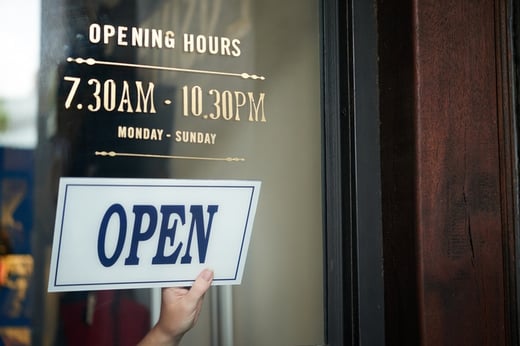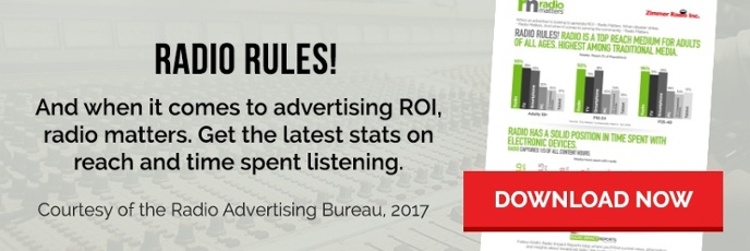 Are you familiar with the adage, you only get one chance to make a great first impression? Customer perspective — that is, the impression customers have of your business — plays a big role in the success of that business. You see, it isn’t enough to have great promises in your Joplin marketing campaigns; that only gets them to the door. And that’s where you only get one shot at convincing customers that your business is worth their time and money.
Are you familiar with the adage, you only get one chance to make a great first impression? Customer perspective — that is, the impression customers have of your business — plays a big role in the success of that business. You see, it isn’t enough to have great promises in your Joplin marketing campaigns; that only gets them to the door. And that’s where you only get one shot at convincing customers that your business is worth their time and money.
The Customer Perspective
We really dug into this topic in our last post, and there, we talked about how a customer’s perspective and values come together to define how they see your business. This helps them make choices about what to buy and where to buy it. Their values are determined by psychological and emotional needs that drive them to purchase, so wanting a good night’s sleep, for instance, makes them buy a mattress. But their perspective is defined by something else — experience.
Every customer’s experience is different, and it’s very subjective. What one customer hates, another may love. This makes it incredibly important to do research into your target audience, and even more important to remember you should never rely on assumptions. You have to provide the kind of experience that your customers are actually looking for. Think about it: less than a third of consumers will visit a bricks-and-mortar store because they enjoy the experience there, and half of consumers are ready to switch brands when a given company fails to anticipate and meet their needs.
An enjoyable experience leads to repeat visits and loyalty, word-of-mouth, and ultimately, greater sales and revenue. Bad experiences will send customers running to your competitors. But if experience is really that subjective, how can your business create the right impression?
Factors Influencing Customer Perspective
Subjective experiences rely on objective facts, so once you understand what your target audience is looking for, you can implement processes and changes to make the best possible impression on your customers. Of course, there are lots of factors that come together to influence customer perspective. We’ll take a look at just a few.
Store Flow
Store flow refers to the way customers move through the property of your store. You can almost think of this movement like a river — they flow from their parking spot through the doors, through the store then checkout, and out again. Customers want to be able to find what they came for easily, move freely, and checkout quickly. On the other hand, you probably want the customer to stop and consider numerous products, including some products in particular. This requires balance. If a store is disorganized, cluttered, crowded, or confusing, they probably won’t want to spend much time there. However, you can influence the path they take through the store, ensuring they find what they’re looking for, and strategically place items for them to discover, which can improve your value in their minds.
Parking
Have you ever been to a store you want to love, but you can never seem to find a parking spot? Driving already takes up a large portion of your customer’s day, and they probably won’t have much patience for circling the parking lot or driving around the block in hopes of finding someplace to park. Invariably, they’d rather spend their shopping time inside the store itself. However, availability isn’t the only thing they might consider a problem. If there’s too many potholes, the lines for each spot are extremely faded, spots are too narrow, or any number of other parking frustrations, then parking can severely detract from the customer’s shopping experience. If it’s bad enough — or if it isn’t balanced by incredible quality and value — then they’ll probably decide your business isn’t worth the hassle.
Hours
Different times of day are optimal for different kinds of people. If your customer regularly works the night shift, they may appreciate a store that opens very early or closes very late. If your customer has kids in school, they may prefer the early afternoon or sometime after supper, or maybe they’d prefer to stop on their way home from picking their kids up. If your customer is a college student or a workaholic, they may value a business that’s open 24 hours a day. You need to understand your customers’ needs and preferences in order to add value and meet their expectations. Otherwise, they’ll head to a more convenient competitor.
Some other factors you should consider are your location and customer service. If you’re not sure which areas you should improve, go back to your market research on your target audience. What experiences are they expecting, but not getting? What experiences do your competition offer, but you don’t?
Use This Influence for Positive, Lasting Impact
Have you realized what bigger subject I’m talking about? It’s branding. Some businesses make the mistake of thinking that branding is just their logo, wordmark, or preferred colors. Branding does include those things, but it represents something much bigger. All the aspects that influence what customers think about your company are part of your branding. That includes your Joplin advertising, but it also includes customer experiences and the resulting word-of-mouth. Meeting (or exceeding) customers’ expectations improves the way they see your brand, even when it’s just the parking.
Your marketing decisions must be based on strategy. You need to understand your competition as well as your customers, and you should be using that to identify your difference maker and position your company in the market. A lot of experts believe that the customer experience is going to be one of the greatest differentiators between businesses in the near future. Strategies you start developing now need to have that built into them.

